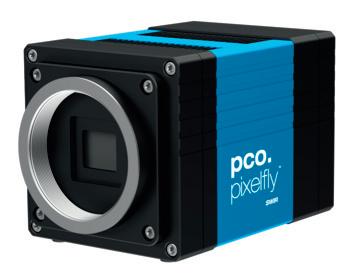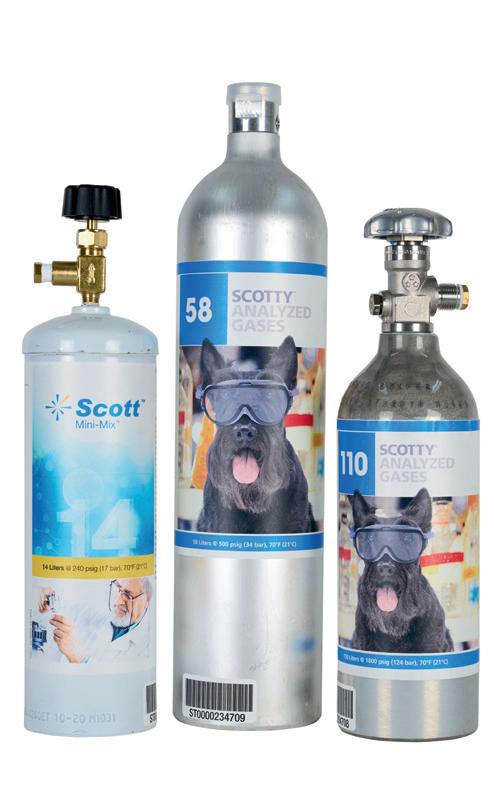
6 minute read
Moving a step closer to recyclable phone batteries
By using high-frequency sound waves to remove rust that inhibits battery performance, batteries could be recyclable and last up to nine years instead of the typical two or three years.
In Australia, only 10% of used handheld batteries, including for mobile phones, are collected for recycling. The remaining 90% of batteries go to landfill or are disposed of incorrectly, which can cause damage to the environment.
A major barrier to these items being reused is the high cost of recycling lithium, but that challenge could be addressed by the team’s research. They are working with a nanomaterial called MXene, a class of materials that may be used as an alternative to lithium for batteries in the future.
Leslie Yeo, Professor of Chemical Engineering and lead senior researcher, said MXene was similar to graphene with high electrical conductivity.
“Unlike graphene, MXenes are highly tailorable and open up a whole range of possible technological applications in the future,” Yeo said.
A challenge with using MXene was that it rusted easily, inhibiting electrical conductivity and rendering it unusable. The researchers overcame this by using sound waves at a certain frequency to remove rust and restore it to close to its original state.
“The ability to prolong the shelf life of MXene is critical to ensuring its potential to be used for commercially viable electronic parts,” Yeo said.
How the innovation works
Co-lead author Hossein Alijani, a PhD candidate, said the rust that forms on the surface on MXene in a humid environment or when suspended in watery solutions was its greatest challenge.
“Surface oxide, which is rust, is difficult to remove especially on this material, which is much, much thinner than a human hair,” Alijani said.
He said current methods used to reduce oxidisation rely on chemical coating of the material, which limits its use.
“In this work, we show that exposing an oxidised MXene film to high-frequency vibrations for just a minute removes the rust on the film. This simple procedure allows its electrical and electrochemical performance to be recovered,” he said.
Potential applications
The team’s method of removing rust from MXene opens the door for the nanomaterial to be used in applications in energy storage, sensors, wireless transmission and environmental remediation.
Associate Professor Amgad Rezk, one of the lead senior researchers, said, “Materials used in electronics, including batteries, generally suffer deterioration after two or three years of use due to rust forming. With our method, we can potentially extend the lifetime of battery components by up to three times.”
Next steps
While the innovation is promising, the team needs to work with industry to integrate its acoustics device into existing manufacturing systems and processes.
The team is also exploring the use of their invention to remove oxide layers from other materials for applications in sensing and renewable energy.
“We are keen to collaborate with industry partners so that our method of rust removal can be scaled up,” Yeo said.
The research paper ‘Recovery of Oxidized Two-Dimensional Titanium Carbide Ti3C2Tz MXene Films Through High Frequency Nanoscale Electromechanical Vibration’ was published in Nature Communications
RMIT University www.rmit.edu.au
NON-CONTACTING RADAR TRANSMITTERS
Emerson has introduced the Rosemount 1208 Level and Flow Transmitter Series non-contacting radar transmitters. The product is an alternative to ultrasonic and hydrostatic devices for water monitoring applications, featuring 80 GHz fast-sweep frequency modulated continuous wave (FMCW) technology on a single electronic chip, which delivers measurements within a compact device suitable for applications with space constraints or compliance requirements, such as water applications.

The measurement accuracy of the line is unaffected by most process conditions, including condensation and variations in pressure, temperature and density. The transmitter collects information with fast-sweep FMCW technology and advanced algorithms. This provides level measurement accuracy of 2 mm at a range of 15 m, helping organisations optimise processes and comply with environmental requirements. In addition, the non-contacting design has no moving parts or calibration requirements, creating a virtually maintenance-free device that minimises manual procedures and delivers long-term performance.
The transmitter is available in two models, offering different communication protocols and approvals. It is designed specifically for water and process industry utility applications and offers IO-Link connectivity as part of its hybrid communication options that also include three-wire 4–20 mA and switch outputs. IO-Link connectivity reduces installation complexity, enables simple integration into high-level automation networks and provides access to process insights that can enhance operational performance. It further reduces complexity by enabling remote configuration and monitoring.
The product offers two-wire 4–20 mA and HART communication options, providing access to advanced diagnostics. This supports predictive maintenance and more effective troubleshooting, leading to reduced downtime and improved operational efficiency. Hazardous area approval enables use in areas where an explosive gas atmosphere could occur during normal operation.
Emerson www.emerson.com
Machine Vision Camera
The pco.pixelfly 1.3 SWIR from PCO.Tech is a machine vision camera with an InGaAs image sensor that is IMX990-sensitive in the shortwave infrared, near infrared and visible range of the electromagnetic spectrum.

The camera is suitable for use in a variety of applications, including waste sorting, smart farming and food processing quality control, pharmaceutical and other product packaging industries.
The camera shows a good high sensitivity in the whole spectral range, with up to 90% in the shortwave infrared part. The small pixels enable the use of small magnification optics in microscopy and a low dark current for even longer exposure times. As a result, it shows high sensitivity across the entire spectral range with more than 90% in shortwave infrared. Features include VIS & SWIR sensitivity, 400 to 1700 nm, 1280 x 1024 resolution, long exposure times due to low dark current and peak QE of 90%. The camera’s small 5 x 5 µm pixels enable the use of small magnification optics in microscopy. It measures 7 x 7 x 11.5 cm and uses a USB 3.1 Gen 1 interface.
SciTech Pty Ltd www.scitech.com.au
Leak Detecting Noise Logger
WaterGroup has launched the SmartEAR, a SebaKMT IoT noise logger built to detect leaks in water networks.
Thanks to the advances in modern IoT technologies, the product is designed to make it much easier to monitor critical or troublesome water mains. Instead of requiring two or even three devices to detect a leak, record it and send it to the cloud, this product is designed to do it all in one.
The device allows recording up to 10s noise files at configurable times and intervals, using a revised cloud-based monitoring platform: Poseyedon.
With a battery life of up to nine years, it can be accommodated in below-ground hydrant compartments, valve boxes and other tight spaces.
The SmartEAR-GO! app displays data and lets utilities install and manage the devices with a guided installation routine. Another feature is the antenna test. Open and close the lid, and it will measure the current signal strength and quality in 1 s intervals. If required, the signal can be boosted by various external antenna solutions.
The device comes pre-programmed to enable quick leak detection. Thanks to the built-in NB-IoT/CAT-M1 combi module and its magnetic attachment, it is a simple plug-and-play installation.
Once in operation, the device can determine the probability of leakage in the water network each day.
WaterGroup Pty Ltd www.watergroup.com.au
To Standards For Voc Monitoring
Volatile organic compounds (VOCs) are common groundwater contaminants that can include a variety of chemicals and may be emitted as gases from certain solids or liquids.
TO 14, 15, 17 standards for VOC monitoring and soil sampling are available from CAC GAS in all configurations 39, 41, 62 or subset component mixtures. Gas mixtures for all VOCs, including BTEX mixtures, Isobutylene and other organic vapours, are available.
The gas mixtures are available in a variety of cylinder sizes including: 14DS (14L steel), 48AL (48L aluminium), 58DAL (58L aluminium), 74DAL (74L aluminium), and 98RAL (110L aluminium).

CAC Gas & Instrumentation www.cacgas.com.au
Protective Packaging Solution
ExpandOS is a protective void fill that is fully certified biodegradable, compostable and also holds SFI certification in the US. It has been used in the packaging industry for over 15 years in the US and Europe, and now has a growing presence in Australia and NZ. ExpandOS can be branded by product owners to help with environmental marketing.
The 40 x 40 x 36 mm triangular structure is made from 400 GSM recycled kraft board with notches on the edges to facilitate interlocking with each other. The result is a rigid mass that is designed to stop product movement in the carton. If a carton is accidentally dropped by freight couriers, the packaging solution can help to absorb the energy from the fall, protecting the product and reducing breakage significantly. For example, it has been used to reduce breakage of flat screen TVs by placing another box around the TV and filling the void with ExpandOS.
Designed to not only reduce breakage in transit but also reduce carbon footprint, the packaging solution is suitable for products such as ceramics, crystal and glass, electronics, commercial parts and equipment, general manufacturing and even in aerospace markets.
The Ribbon Supply Co. www.ribbonsupply.com.au










